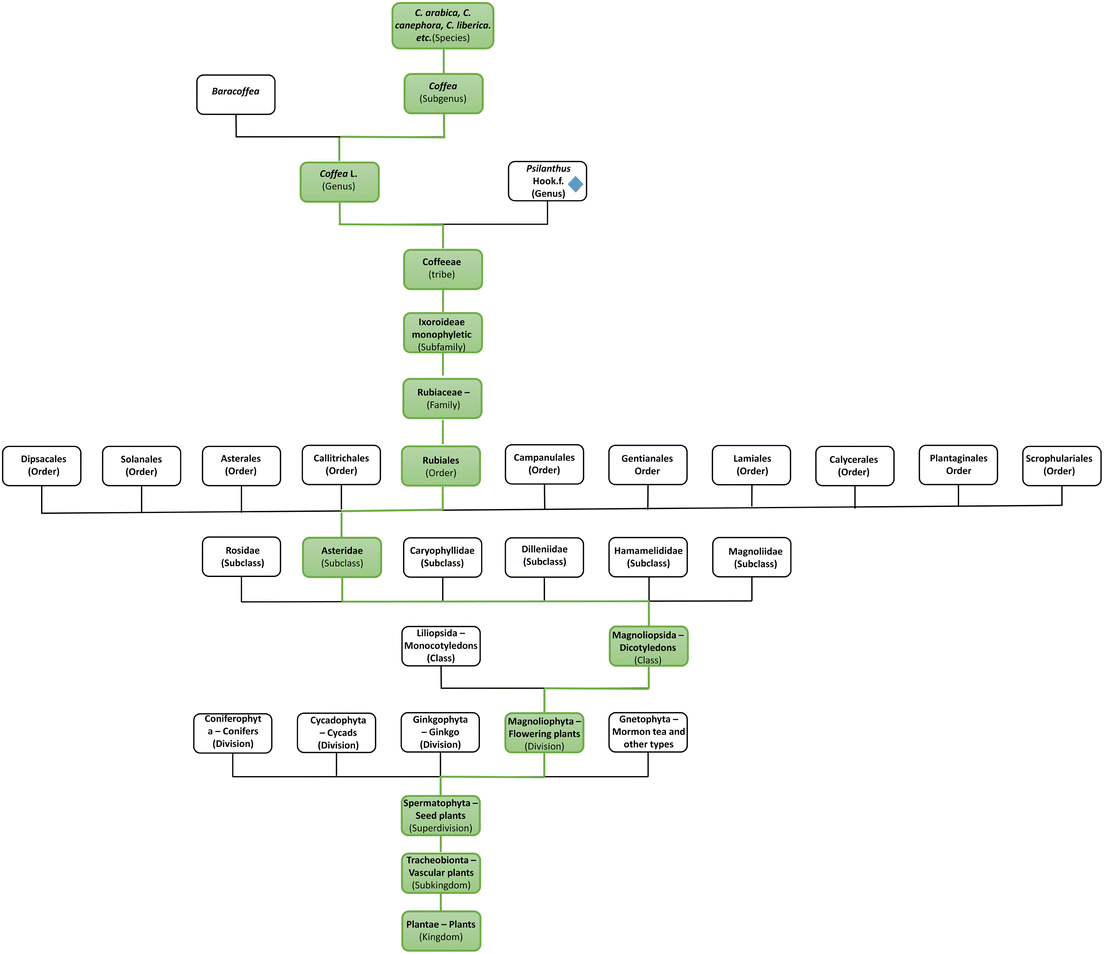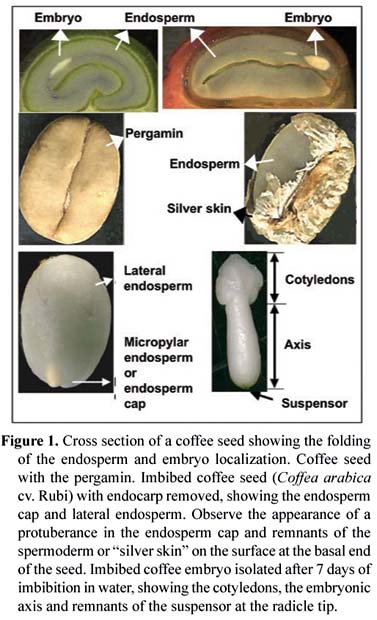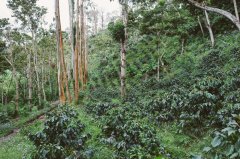Coffee Bean Species Arabica and Robusta Coffee Bean Relationship Wild Coffee Tree Distribution and Characteristics
Many people compare Arabica with Robusta coffee beans and think they are juxtaposed. In fact, Robusta has a higher seniority than Arabica, which is pollinated by a cross between Robusta and Coffea canephora. Let the editor popularize the following little knowledge for everyone today!
Of all the cataloged species of coffee, only three are of commercial importance: small-grain coffee, Coffea canephora and the much less Coffea liberica, the first being the most cultivated crop. C. arabica is a tetraploid species (2n = 4x = 44) derived from a natural cross between C. canephora and C. eugenioides or the ecotypes associated with these two diploid species (2n = 2x = 22). Compared with other known species, it is the highest cup quality species, but this plant is not as strong and resistant as C. canephora species. It has been reported that triploid hybrids originated from the hybridization between C. arabica and diploid species. They tend to be robust plants, but they are almost completely sterile. C. arabica is self-compatible (self-breeding), but C. canephora maintains heterozygosity because of its cross-pollination (self-incompatibility). Liberian coffee Hiern is a diploid species cultivated on a small scale, mainly because it is sensitive to diseases, especially Fusarium oxysporum. Compared with C. canephora species, its seeds tend to have better cup quality, but still worse than C. arabica. Although there is a close phylogenetic relationship between C. liberica and C. canephora, there are great differences in morphological characteristics between these species. Therefore, C. liberica may be interested in interspecific breeding programs.

Due to the richness of coffee types and varieties, as well as the popularity of coffee drinks, some confusion was observed in naming when referring to the main types of coffee, and the author found it useful to clarify some misunderstandings. For example, "Coffea canephora" is described as "Coffearobusta", while "robusta" is actually mainly reported as a variety or subvariety of the Coffea canephora species. Similarly, the term "Robusta" is widely used for commercial and other purposes as a synonym for "Kouilouensis" (also known as "Kouillon" or "Conilon"), which is a different variety of coffee widely cultivated in Brazil and has different chemical and sensory properties. Another misunderstanding sometimes occurs in the term "Coffea dewevrei", which is used in some cases to refer to a single species, while in others it is used as a synonym for Coffea liberica. In fact, & # 39 * 39 * 39; and * # 39 * In addition, coffee varieties (wild genotypes) are confused with the names of cultivated varieties (plants chosen by humans for cultivation). With the progress of science and research to reveal the genetic, chemical and sensory differences between coffee species and varieties / cultivated species, the knowledge of coffee genetics and nomenclature is becoming more and more important for the interpretation and dissemination of correct information in scientific reports.

Important Notice :
前街咖啡 FrontStreet Coffee has moved to new addredd:
FrontStreet Coffee Address: 315,Donghua East Road,GuangZhou
Tel:020 38364473
- Prev

What water does Water for coffee use to make coffee? perfect water quality conditions for good brewers of coffee.
You may have some knowledge of coffee. From beginner lovers to the latest and best barista equipment, have you considered another way to create the ideal coffee? Yes, we are talking about the water you use, and it turns out that whether you choose tap water, distilled water or filtered water, it will have a huge impact on your brewing. Qianjie thinks that seemingly simple coffee is made.
- Next

Nicaraguan Lemon Tree Coffee Manor Story characteristics of sipping Flavor of Java Coffee Bean
Java species are similar in shape to ladder card species, and most Java species are short-grained Slor Ber), while Java species with long grain (Long Ber) are few, and Java is a rare Java long grain. Variety and appearance are rare, but the flavor is very clean and delicate. There has never been a similar flavor in the history of Nicaraguan coffee. Java provenance comes from iron seed system, Nicaraguan coffee has always been
Related
- Detailed explanation of Jadeite planting Land in Panamanian Jadeite Manor introduction to the grading system of Jadeite competitive bidding, Red bid, Green bid and Rose Summer
- Story of Coffee planting in Brenka region of Costa Rica Stonehenge Manor anaerobic heavy honey treatment of flavor mouth
- What's on the barrel of Blue Mountain Coffee beans?
- Can American coffee also pull flowers? How to use hot American style to pull out a good-looking pattern?
- Can you make a cold extract with coffee beans? What is the right proportion for cold-extracted coffee formula?
- Indonesian PWN Gold Mandrine Coffee Origin Features Flavor How to Chong? Mandolin coffee is American.
- A brief introduction to the flavor characteristics of Brazilian yellow bourbon coffee beans
- What is the effect of different water quality on the flavor of cold-extracted coffee? What kind of water is best for brewing coffee?
- Why do you think of Rose Summer whenever you mention Panamanian coffee?
- Introduction to the characteristics of authentic blue mountain coffee bean producing areas? What is the CIB Coffee Authority in Jamaica?

